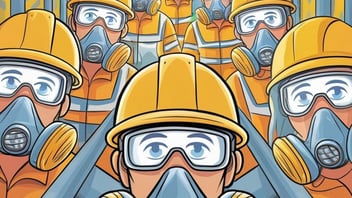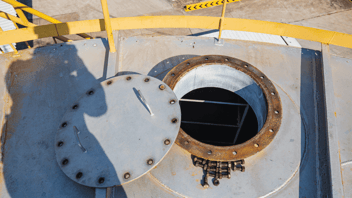In the realm of occupational safety, understanding what constitutes a confined space can be a matter of life and death.
What is a Confined Space?
A Confined Space is defined as an area that is large enough for an employee to enter and perform assigned work but has limited or restricted means for entry or exit. These spaces are not designed for continuous occupancy. Examples include tanks, silos, storage bins, hoppers, vaults, and pits.
Understanding this definition is crucial for recognizing environments that could pose serious risks to workers. These spaces can be deceptively dangerous due to their structural characteristics and the potential for hazardous atmospheres.
Key Characteristics of Confined Spaces
Confined spaces typically exhibit several key characteristics: limited openings for entry and exit, unfavorable natural ventilation, and the potential presence of hazardous substances. These characteristics make emergency situations particularly perilous, as they can complicate rescue efforts and exacerbate the risks associated with hazardous conditions.
Additionally, the physical layout of confined spaces often leads to restricted movement, making it difficult for workers to maneuver or escape quickly if necessary.
The Importance of Identifying Confined Spaces
Identifying Confined Space in the workplace is a critical step in managing safety risks. Failure to recognize these environments can lead to inadequate preparation and insufficient safety measures, increasing the likelihood of accidents and injuries.
Proper identification allows for the implementation of specific safety protocols, such as atmospheric testing, the use of personal protective equipment (PPE), and the development of emergency response plans. These measures are essential for safeguarding workers involved in confined space work from the unique hazards these environments pose.
Common Hazards Associated with Confined Spaces
Confined spaces present a range of hazards, including oxygen deficiency, toxic atmospheres, flammable gases, and physical hazards such as drowning, entrapment, or falling objects. These dangers can quickly escalate, especially in poorly ventilated environments where hazardous substances can accumulate.
Recognizing these hazards is essential for risk assessment and the implementation of appropriate controls. Regular training and awareness programs can help workers understand the risks and the necessary precautions to take when working in or near Confined Space.
Best Practices for Safety in Confined Spaces
To ensure safety in confined spaces, it is essential to follow best practices such as conducting thorough risk assessments, ensuring proper ventilation, and using appropriate PPE. Regular monitoring of atmospheric conditions and having trained personnel on standby for rescue operations are also critical components of a comprehensive safety strategy.
Additionally, fostering a culture of safety through continuous education and training can empower workers to recognize and respond to potential hazards effectively. By prioritizing safety and preparedness, organizations can protect their employees and minimize the risks associated with confined spaces.






Leave a Comment